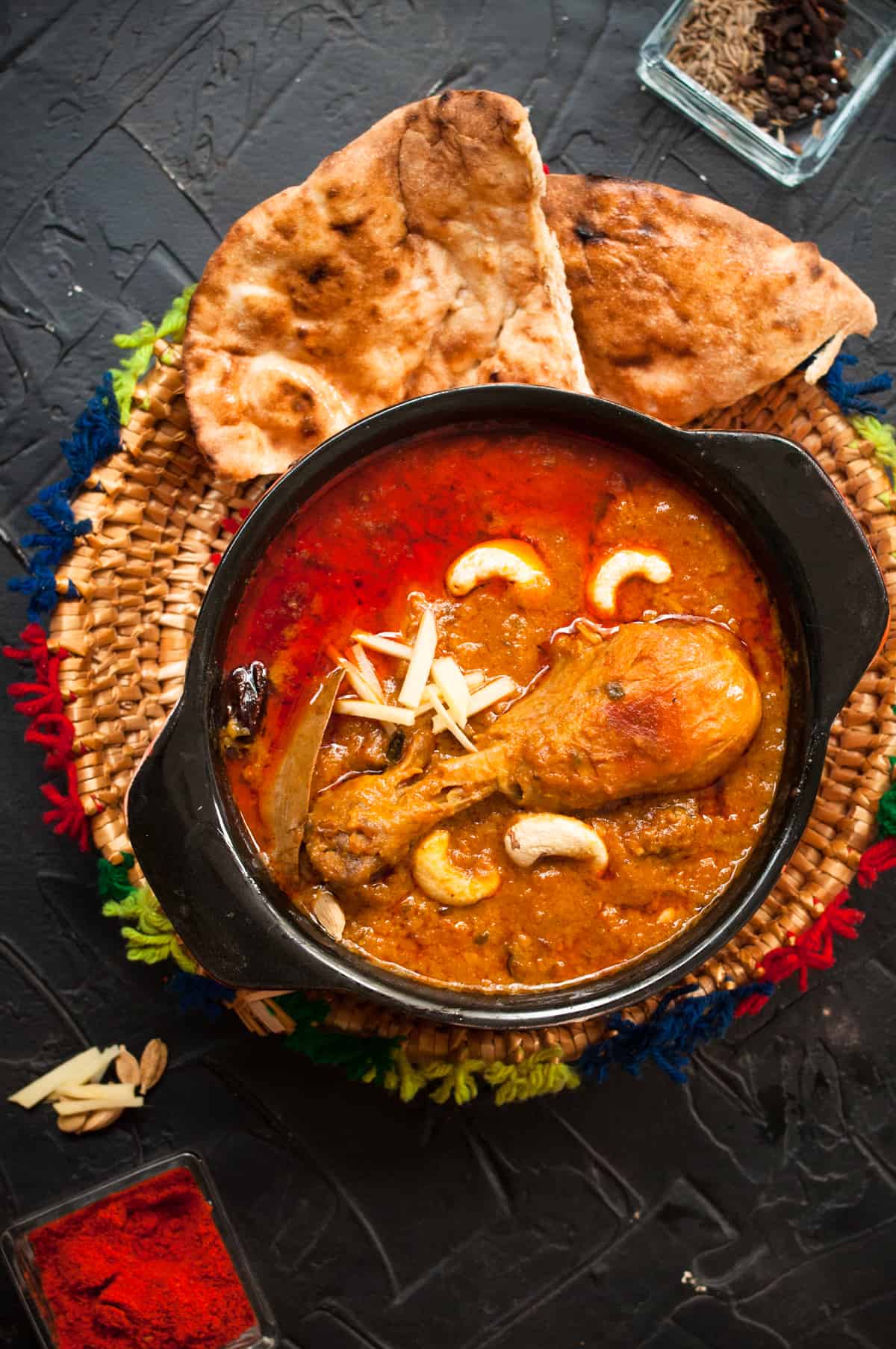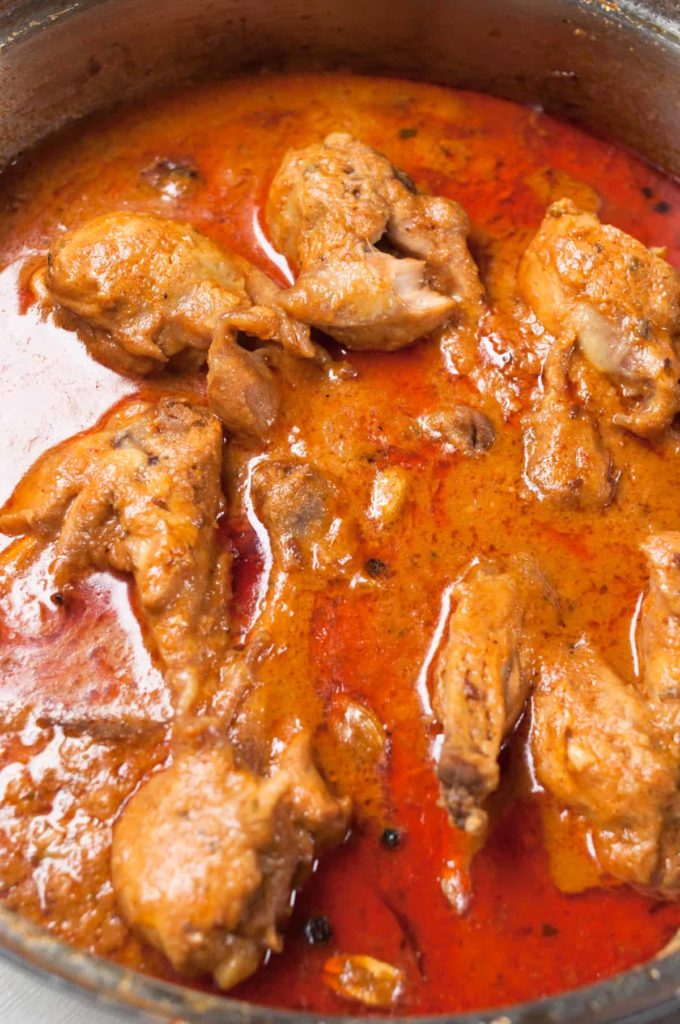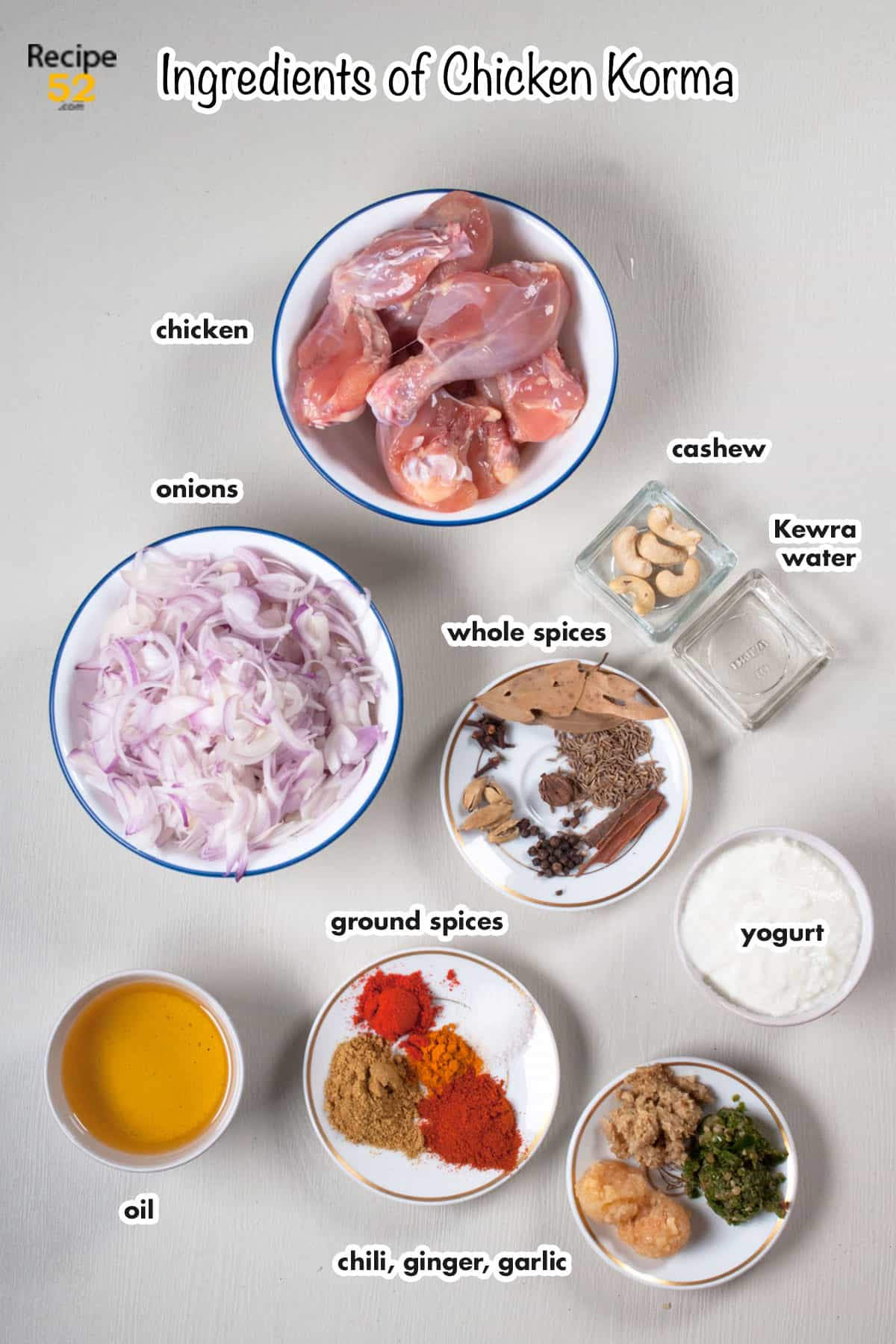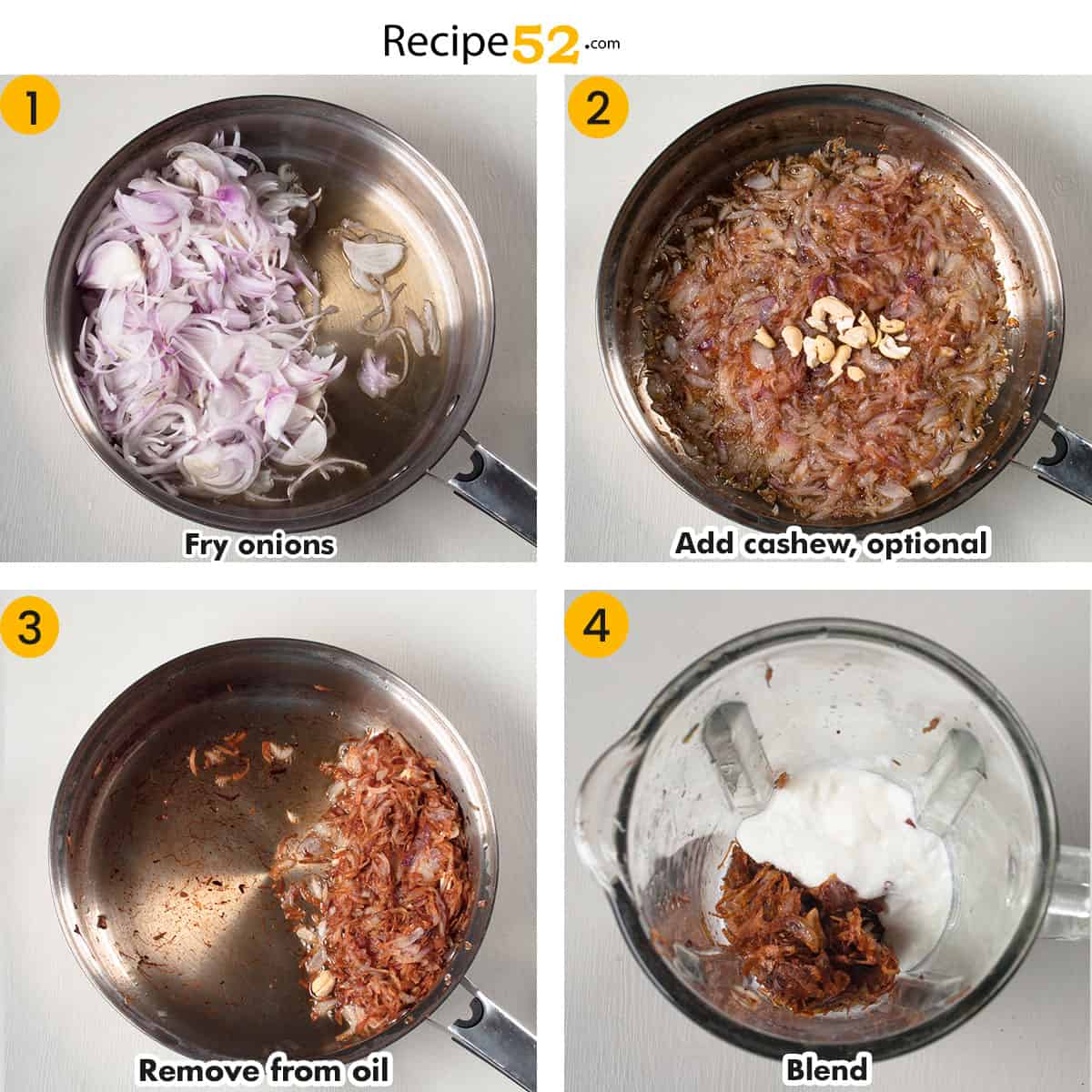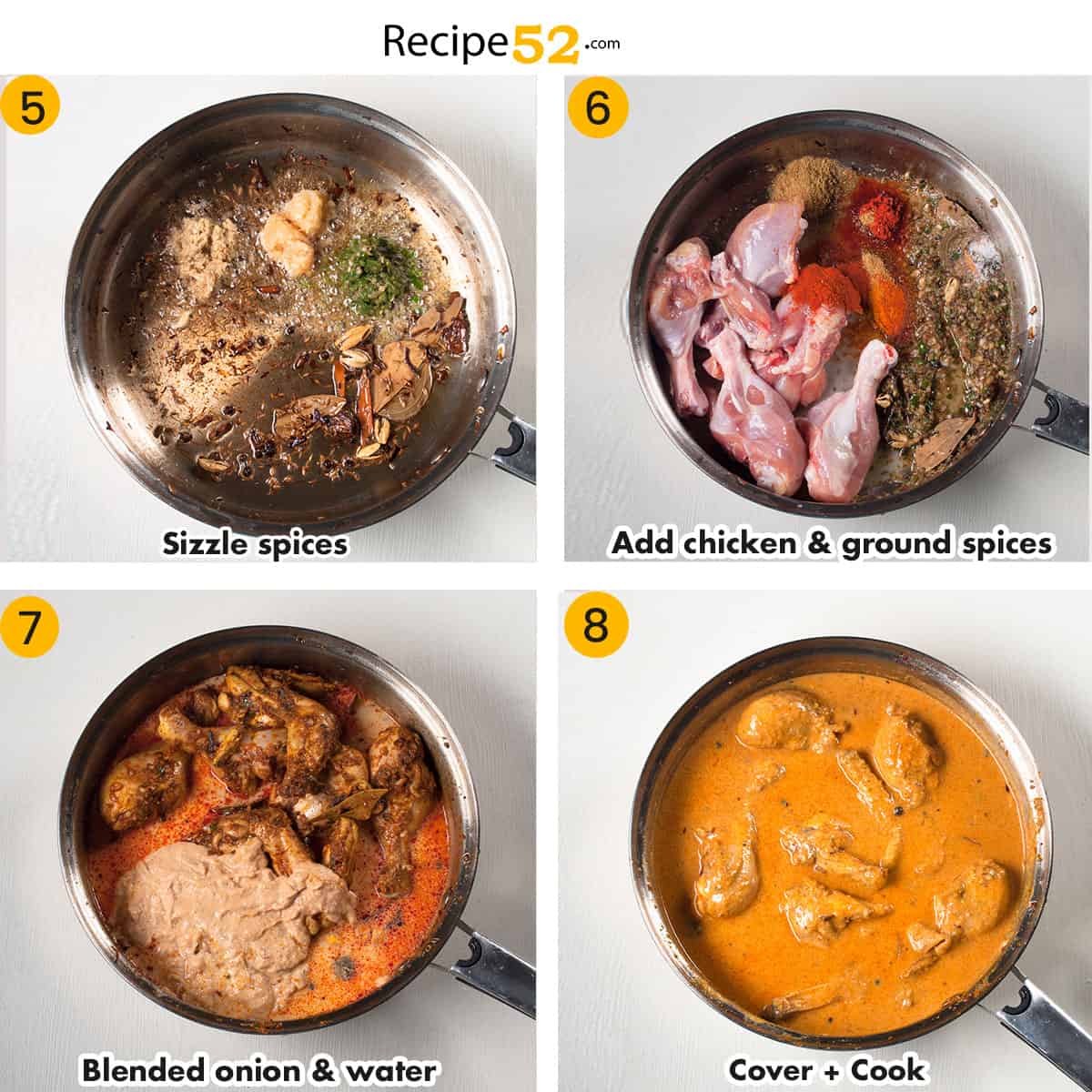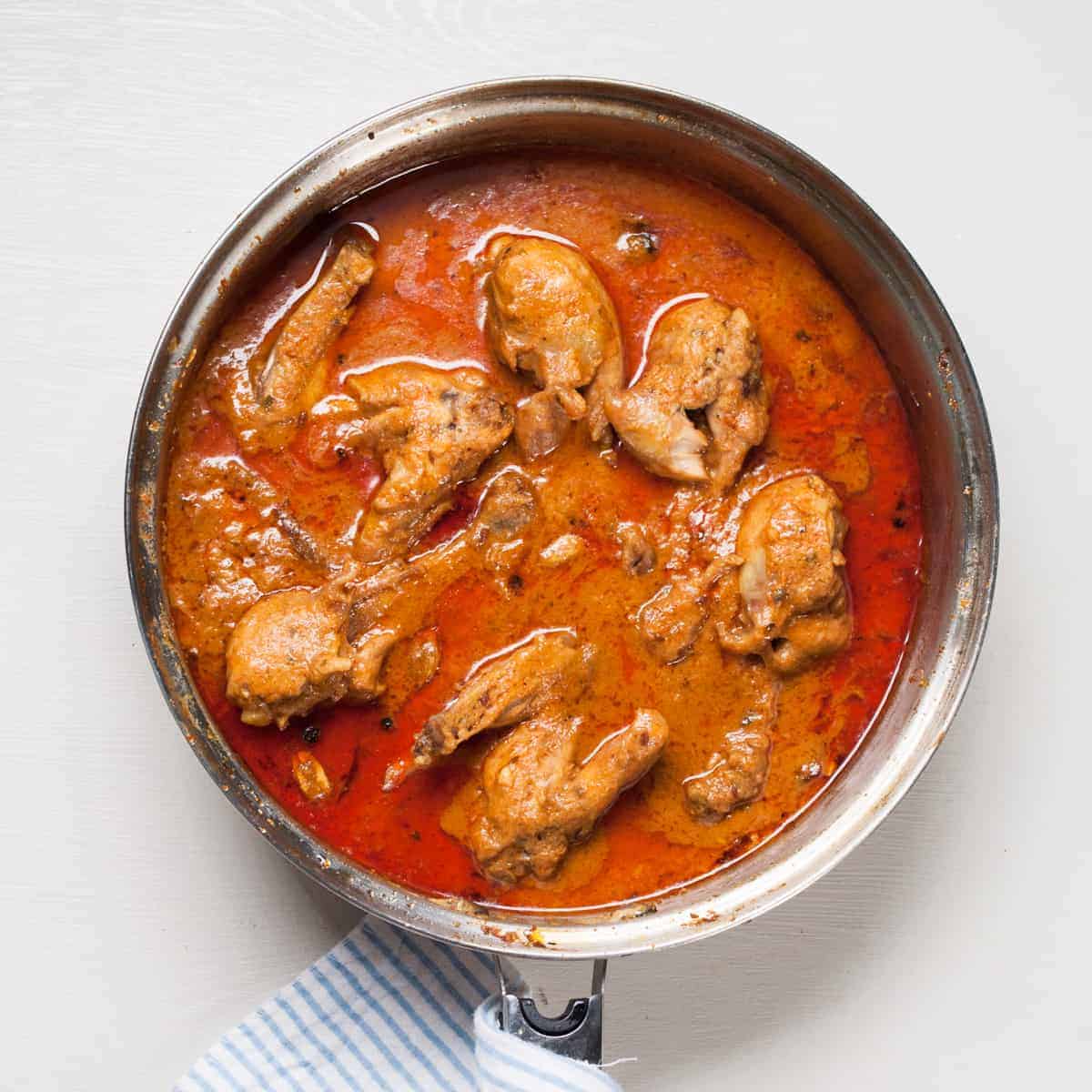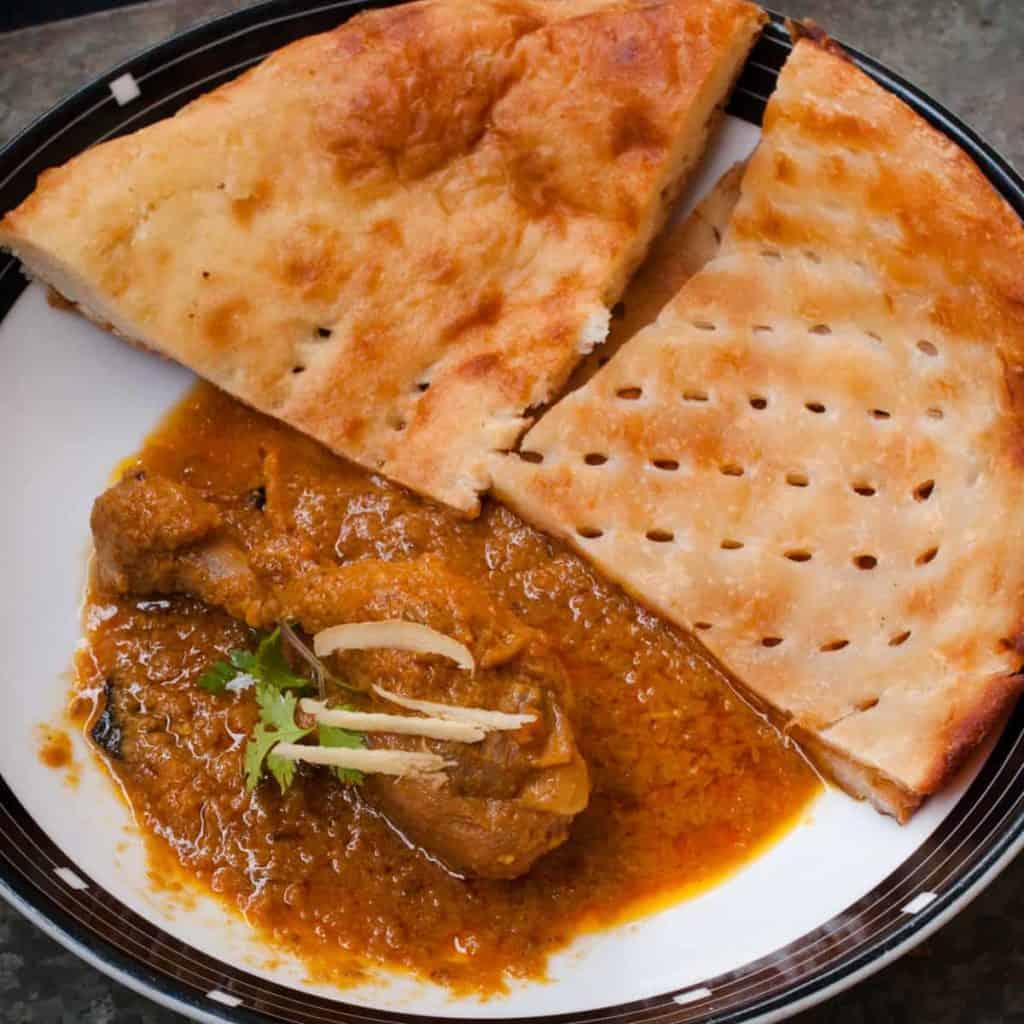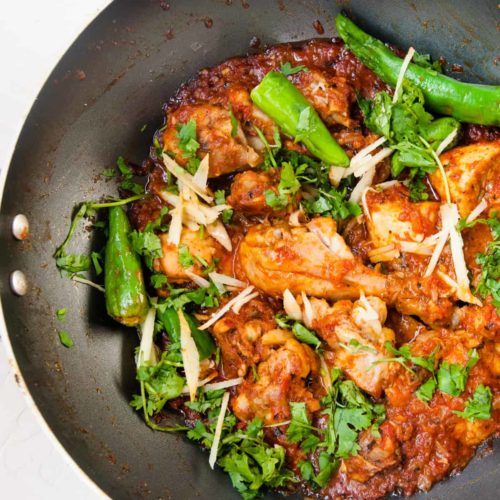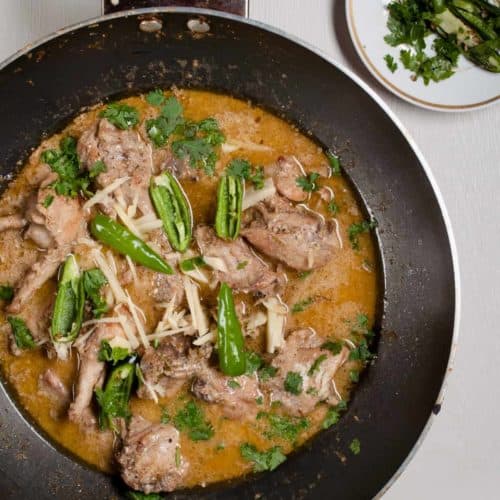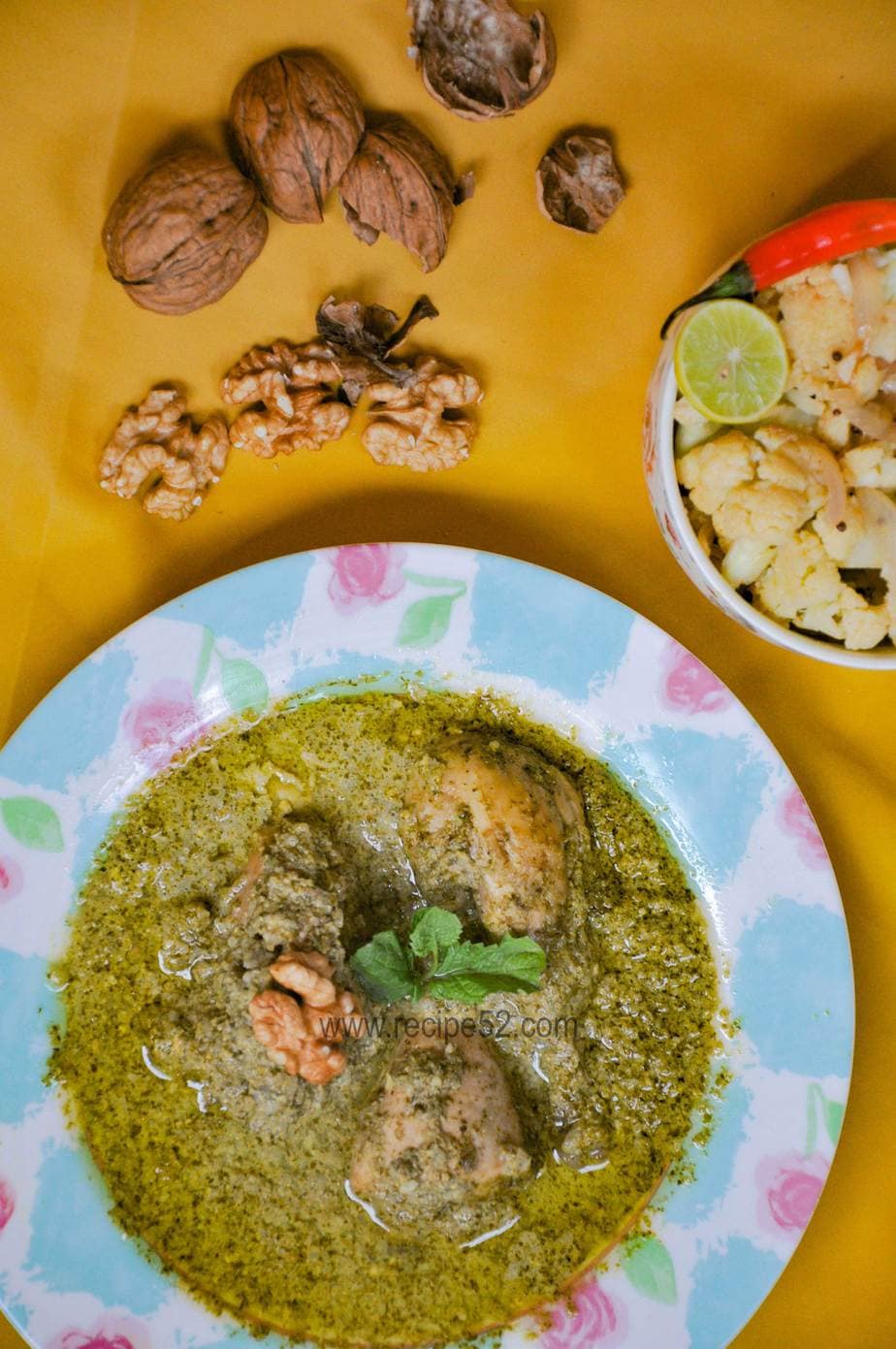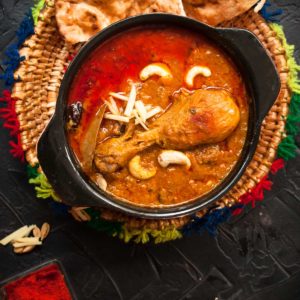In broader terms, as Gordan Ramsay puts it, Chicken Korma is a South Asian dish featuring chicken or meat in a rich spiced sauce made of cream or yogurt or coconut cream.
Origin
Korma originated in the Mughal kitchen in the 16th century where spices and nuts were profuse. This recipe shares the authentic Muglai Chicken Korma, often called Shahi Korma, (shahi means Royal). Many other recipes developed in that time like Haleem, Biryani, and Shami kabab. From there Chicken korma spread to other regions including Uk under British rule and further when South Asian immigrant took their heritage around the world. 5 centuries later the Korma has many variations and many versions. There are many versions of korma, the popular ones are a milder and cream-based UK version, the vegetarian nav ratan korma, the North Indian and Pakistani yogurt-based korma, and the South Indian coconut cream based korma, and white korma. Now, what we will be discussing here is authentic Pakistani Chicken Korma (or qorma) which is a moderately spiced yogurt-based curry. It is rich with spices and nuts; kewra or saffron is also added for aroma. As qorma, Korma literally means fried meat. Pardon me for a little extra oil.
How to make it?
I wish I can express in words how many times I tried this recipe and how much research, I did before I could claim it as the most authentic version of traditional Pakistani chicken korma.
Aroma: You smell it and know it’s korma curry. Without a doubt, the kewra water and whole spices play a big role here. If you skip 1-2 spices that’s ok. Texture: Korma has light smooth gravy (not creamy or pasty ) with oil separating profusely. You can always remove excess oil. Color: Pakistani Korma has reddish-orange oil separating on the side with light orangish brown gravy. The shahi (royal) and Mughlai (of Mogal kingdom) versions laden with extra nuts or cream, might have lighter shades. The White Chicken Korma is another version served to Emperor Shah Jahan at the opening of the Taj Mahal. Yogurt-based: The authentic Korma that came into being in the Mughal kitchen was without tomato because tomato came to India in the 16th century and was cultivated by the British in the 18th century. So these tomato-deprived people (Mogol chefs) had to rely on yogurt.Tomatoes taste great in any curry and you may add a tablespoon of tomato paste but you can’t call that authentic Korma, it’s your version. This korma tastes very similar to what you get in Pakistani weddings that are never garnished with cilantro; because it’s not Aloo Gosht or Nihari. It’s Korma or Qorma. I want you to know these to save you from ridicule from pedantry. Just know the basics then cook as your heart desires.
I took this photo while testing the recipe without cashew. The texture is still good. I added this to show you Taftan (left) and sheermal (right). If you try this Chicken Korma recipe, I’d LOVE to hear your feedback in the comments. Your 5-ratings motivate me to do my best. Stay connected for more recipes and videos on Facebook, Instagram, Pinterest, and Youtube.
📖 Recipe
